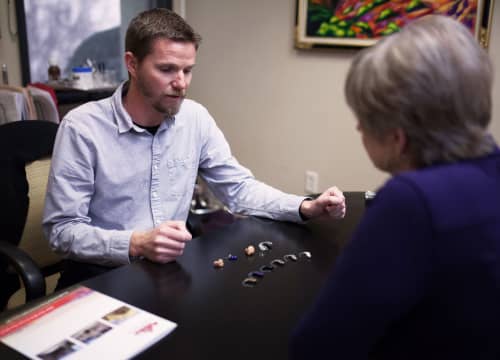
Navigate Any Listening Environment With Modern Hearing Aids.
Modern hearing aids are constantly evolving and improving. In addition to the battery size, unit size, connectivity and rechargeability, manufacturers are also incorporating artificial intelligence. This technology can help to optimize the sound you hear based on the listening environment you’re in to provide you with their most versatile and adaptable hearing devices yet.
Audiologists Show You the Best Solutions for You—Because One Size Doesn’t Fit All.
Every hearing loss is different because every patient is different. For example, someone who spends most of their time in the garden, reading, and watching television has different needs than someone who likes to go to parties, cycles and loves being front row at a concert. If both of those people have an identical hearing test, they may not benefit from the same hearing aid.

Providing Specialized Help For Individualized Treatment
1. Identifying Your Needs
Before we even perform a physical exam and hearing assessment, we want to learn about you. What’s your lifestyle like? What activities do you do, and where do you spend time doing them? What have you given up because you can’t hear?
The right treatment plan, which may include hearing aids, addresses your individual needs. Your life is multi-faceted, and so is your listening environment; we recommend models that meet your changing needs head-on.
2. Recommending the Latest Models
After we’ve identified your hearing levels, we’ll discuss what solutions are designed to work with your lifestyle. We work with multiple hearing aid manufacturers, and every model has different features. What do they have in common? They all meet current FDA regulations for medical devices. They are very different from anything that would be purchased as a “hearable” or “listening device” without the support of a medical professional.
3. Professional Ongoing Support
Hearing aids are just the beginning of your unique, individualized and comprehensive treatment plan. Our audiologists work with you to make sure your hearing aids are comfortable, correctly adjusted and that you have the training to use and benefit from all of their features.
We provide ongoing support and counseling for you and your family to assist you in acclimating to your new hearing device. The world is full of sounds; we’re here to help you hear them all.
Call Arizona Hearing Specialists at (520) 742-2845 for more information or to schedule an appointment.